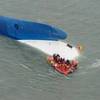Capesize Rates to Rise Much Higher this Year
According to Commodore Research & Consultancy, capesize rates ended last week at $15,561/day, which marked a week-on-week increase of $6,167 (66%). Capesize rates have been able to rise by such a large amount so quickly, as vessel availability in both the Atlantic basin and Pacific basin have become tighter.
Going forward, demand for capesize vessels is poised to rise even further as both Australian and Brazilian iron ore production is set to rise much further through the end of the year (the most significant element is that Brazilian iron ore production is set to rise by an extremely large amount and much less capesize vessels are available in the Atlantic basin).
Coal shipment volume is also increasing in both the Atlantic and Pacific. European coal port stockpiles are at lows not seen since April, Indian power plant coal stockpiles are at critical lows, and China's annual seasonal rise in rainfall (and hydropower production) is coming to end. Demand for coal in Europe, India and China has increased this month and is set to find greater support during the upcoming months. This is supporting the capesize market, panamax market and handymax market.
In total, 10 dry bulk vessels (including nine Capes) were chartered to haul Brazilian iron ore cargoes in the spot market last week. This was four more than were chartered during the previous week and the most chartered in any single week since the first week of July. Vessel availability in the Atlantic basin has already been tight and the increase in demand for vessels to ship Brazilian iron ore cargoes is leading to a strong increase in capesize rates. Much more Brazilian iron ore will be exported during September through the end of the year, and capesize rates are set to rise to much higher levels this year. In particular, Vale's total iron ore shipments during the second half of this year are expected to total at least 176.3 million tons, which would mark a huge increase of 31.6 million tons (22%) from shipments seen during the first half of this year. The first half of this year saw a considerable decrease in Brazilian iron ore shipments (which is normal), while second half of the year is seeing a huge jump in Brazilian iron ore shipments (which are going to increase much further during the upcoming weeks and months).
Capesize rates are finding significant support now as a result, and are set to rise to much higher levels. Both Atlantic basin and Pacific basin capesize availability will become much tighter. It is not just Vale increasing iron ore production – all three of the major iron ore miners in Australia are also further increasing iron ore production through the end of this year.
Demand for coal in Europe, India and China has also increased recently and is set to find more support during the upcoming months. At the same time, the capesize fleet is now growing by only a relatively small amount. In China, there also remains great demand for imported iron ore. Not surprisingly, iron ore imports surge again last month reaching a robust 82.5 million tons (the third largest amount ever imported). Chinese steel mills continue to consume a much greater amount of imported iron ore over domestic iron ore this year. Steel mills have benefited greatly from the large decline in iron ore import prices seen this year and also continue to favor the consumption of iron ore imports, as imports are of much higher quality than domestic iron ore mined in China and pollutes the environment much less. These factors are all supporting the capesize market.
Source: Commodore Research & Consultancy
















